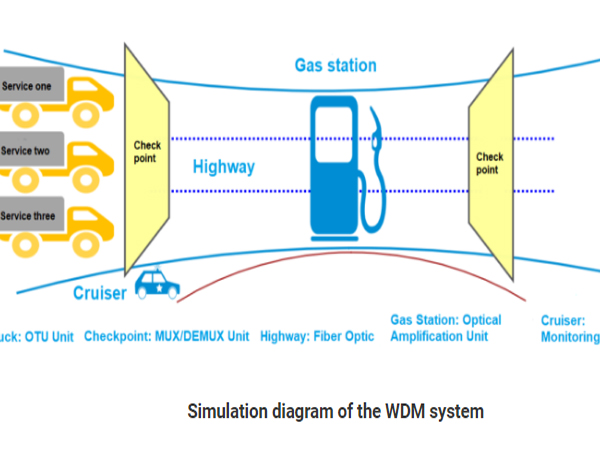
We use mobile phones and computers to post on Facebook and watch videos every day. These simple daily activities require the support of a large-capacity transportation system. Otherwise, the contents of Facebook and videos cannot be accurately delivered to your mobile phone or computer monitor. In this large-capacity transportation system, a significant technology is WDM/OTN.
WDM (Wavelength Division Multiplexing) is a technology that uses different light waves to carry different services and transmits multiple services simultaneously in the same fiber. OTN (Optical Transport Network) can be seen as an optimized and upgraded version of WDM. Let’s talk about these two technologies below.
What is WDM?
If the optical fiber is likened to a highway, the light waves used to transmit services in the WDM system are compared to trucks. Different transmission services such as Facebook and videos are equivalent to packages to be transported, which are directly placed on different trucks. If these trucks all swarm in the optical fiber transmission regardless of lanes, it will cause chaos and disorder in the entire expressway, affecting the transmission efficiency. With WDM, different transmission services can be transmitted simultaneously on the same optical fiber, which is equivalent to dividing lanes for different vehicles on the highway, allowing different cars to run on different lanes at the same time, improving transmission efficiency.

Simulation diagram of optical fiber
At the same time, to ensure smooth traffic, it is necessary to distinguish lanes so that different vehicles can go their own way. Similar to the division of large lanes and small lanes on highways, the lanes in the WDM system are divided into two types: CWDM (Coarse Wavelength Division Multiplexing) and DWDM (Dense Wavelength Division Multiplexing). The former has a larger lane interval (wavelength interval), generally, 20 nm, while the latter interval is small, generally less than 0.8 nm.
What does a WDM system consist of?
Does WDM allow different services to be transmitted on one fiber at the same time as long as the lanes are divided? Things are not that simple, let’s take a look at how WDM does it!
In professional terms, a WDM system is generally composed of an OTU (Optical Transponder Unit), a MUX/DEMUX unit, a monitoring channel, and an optical amplifier unit.

Then, how do the various parts of WDM work together to complete service transmission? Let’s take a look at the transmission process of services in WDM.
1. For services to be transmitted in WDM, it is first necessary to send the services to WDM’s dedicated vehicle (i.e.OTU unit), and convert these service signals into standard wavelength optical signals recognized by WDM.
2. The standard wave optical signal vehicles carrying the services, drive to the checkpoint (i.e. the multiplexing unit) and are arranged to different lanes through the checkpoint. Each vehicle runs on one lane of the highway at the same time.
3. The driving status of the vehicle needs to be supervised by the cruiser, that is, the monitoring channel, to ensure normal service transmission.
4. If the transportation distance is long, it is also necessary to let the vehicle enter the same gas station, that is, to regenerate and amplify the service signal through the optical amplifier unit to ensure that the service is not damaged during long-distance transportation.
5. When the service is transported to the terminal station, the vehicle will come out from the inspection station (i.e. the demultiplexing unit) and be diverted to the corresponding exit of the receiving customer terminal. The service is unloaded from the vehicle, that is, converted into a customer service signal (i.e. a service signal without wavelength information) through the OTU unit, and sent to the customer.